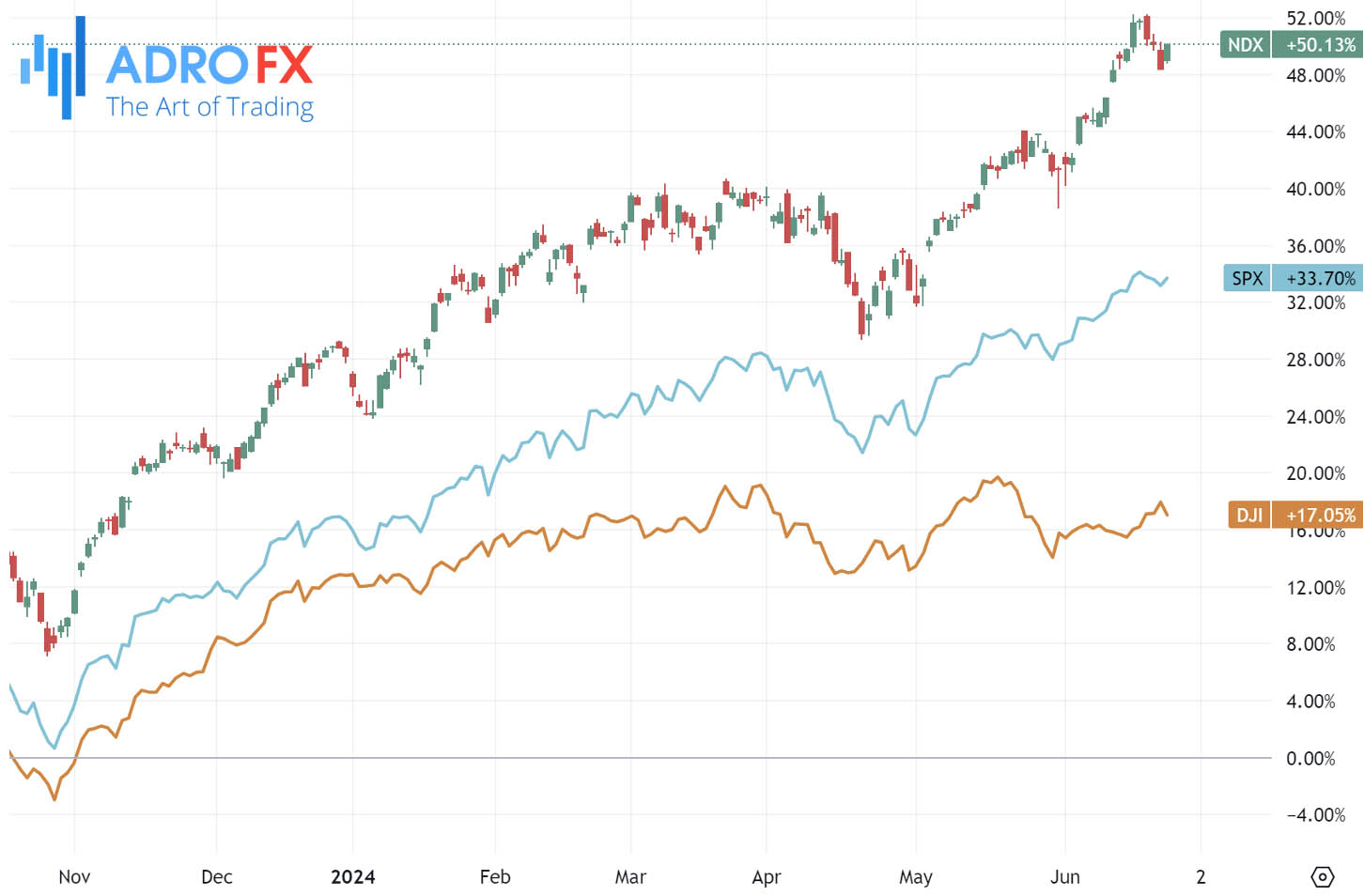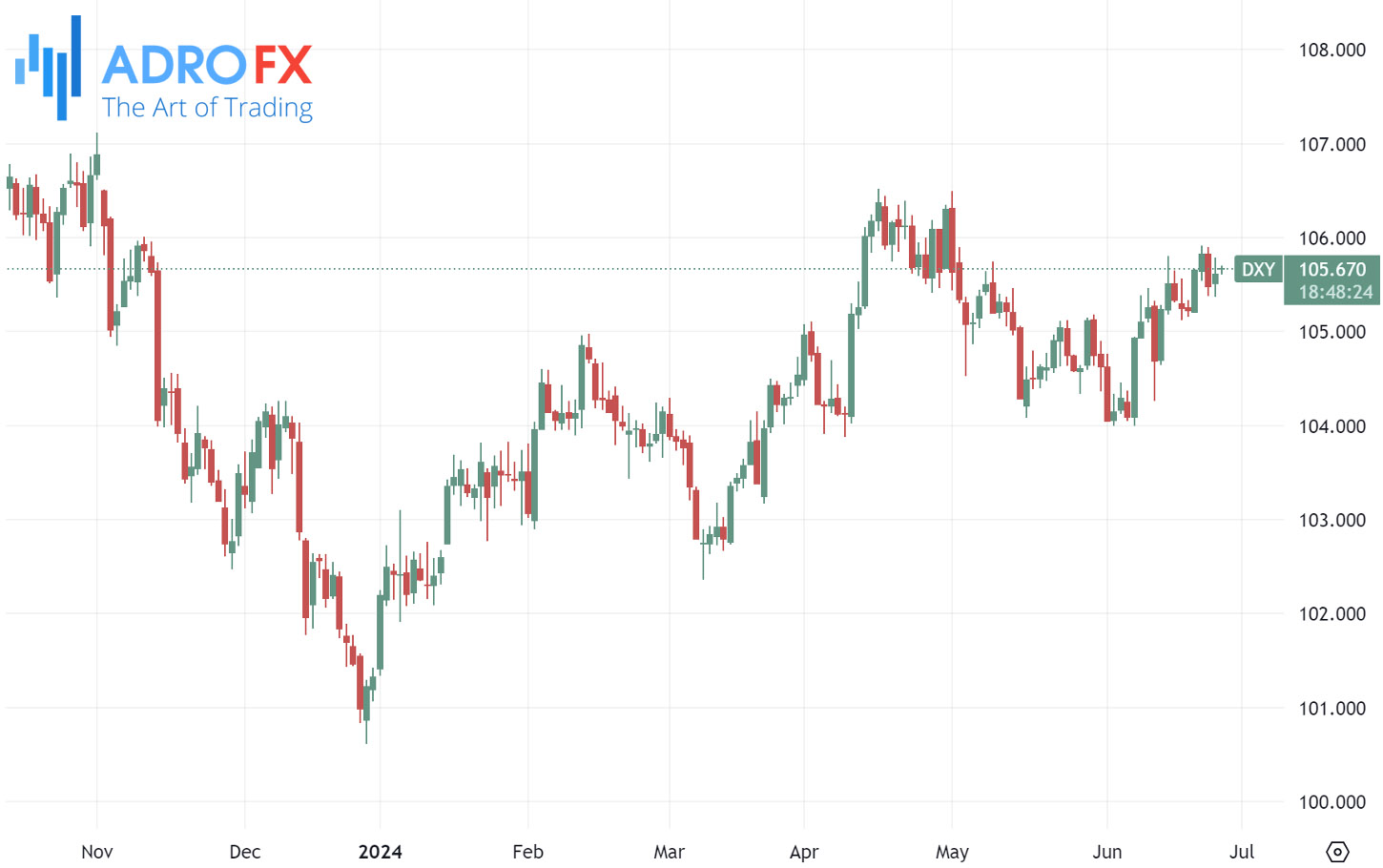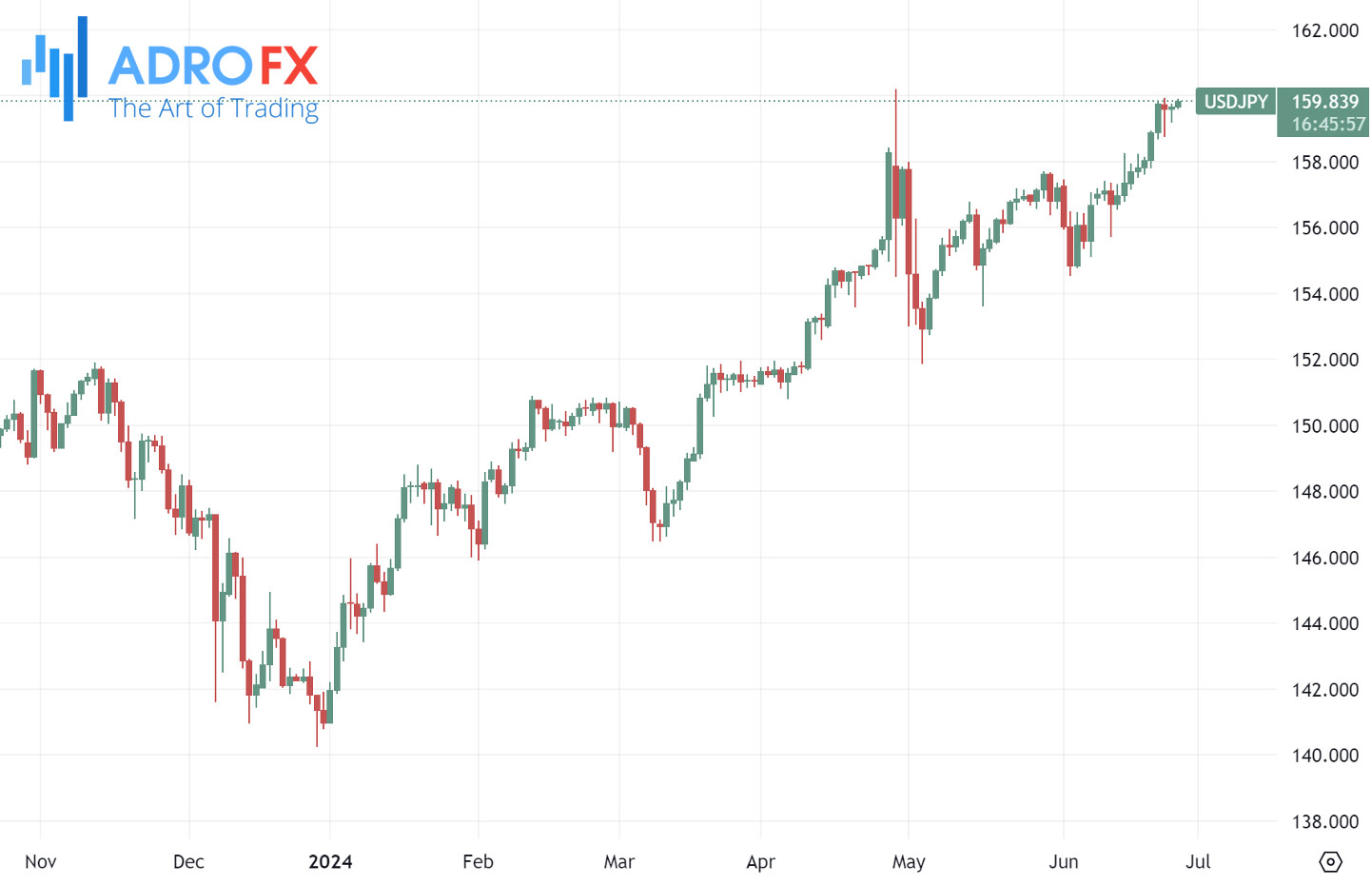Tech Surge Lifts Nasdaq Amid Inflation Watch, Dollar Strengthens on Fed Remarks | Daily Market Analysis

Key events:
- Eurozone - ECB's Lane Speaks
- USA - Building Permits
- USA - New Home Sales (May)
- USA - Crude Oil Inventories
On Tuesday, the Nasdaq surged 1%, bolstered by robust performances from Nvidia and other tech giants, while the Dow faced pressure from retail stocks. Investor focus centered on this week's pivotal inflation data, which could shape future US monetary policy decisions.

Nvidia, a leading AI chip firm, rebounded over 5% following a recent downturn, igniting a broader rally in the semiconductor sector as evidenced by the Philadelphia Semiconductor index's 1.6% gain.
The technology sector led the market, climbing 1.6% after a brief retreat, with heavyweights like Alphabet and Meta Platforms driving the S&P 500 communication services index up by 1.4%.
While recent market dynamics prompted interest in defensive sectors such as utilities and energy on Monday, Tuesday saw a reversal as investors rotated back into favored tech stocks, according to David Lefkowitz, head of US equities at UBS Global Wealth Management.
Meanwhile, the US dollar strengthened on Tuesday, supported by hawkish remarks from Federal Reserve officials and positive housing market data, signaling the Fed's cautious approach towards rate cuts. This drove gains against major currencies like the euro, yen, Swiss franc, as well as commodity-linked currencies such as the Australian and New Zealand dollars.

Fed Governor Michelle Bowman reinforced confidence in the dollar, reiterating that maintaining current interest rates for an extended period should effectively manage inflation. She also hinted at potential rate hikes if necessary.
In contrast, Fed Governor Lisa Cook hinted at future rate cuts "at some point," highlighting progress in inflation control and stabilization in the labor market, though she did not specify a timeline for potential easing measures.
The USD/CAD pair struggles to build on the late rebound from the 1.3620-1.3615 region, a three-week low, and remains defensive during the Asian session on Wednesday. Spot prices hover around the mid-1.3600s, showing little change for the day. The mixed fundamental landscape suggests cautious trading ahead of key US macroeconomic data.

A rise in Canadian consumer inflation in May led investors to scale back expectations of a July rate cut by the Bank of Canada. This, coupled with higher crude oil prices, supports the commodity-linked Loonie and could further limit gains in the USD/CAD pair. Consequently, any attempts at upward movement are likely to attract new sellers at higher levels, risking a quick reversal.
The Australian Dollar strengthens following the release of May's higher-than-expected Monthly CPI. Persistently high inflation complicates potential rate cuts by the Reserve Bank of Australia, thereby supporting the Aussie Dollar and the AUD/USD pair.

RBA Assistant Governor Christopher Kent emphasized on Wednesday the importance of vigilance regarding potential inflation increases. Kent noted that current policies are slowing demand growth and reducing inflation. He also stated that all options for future interest rate adjustments remain on the table, according to Bloomberg.
The USD/JPY pair trades in a narrow range during the Asian session on Wednesday, positioned around the 159.70-159.75 region, just below the nearly two-month peak reached earlier this week. The upside remains limited by concerns that Japanese authorities or the Bank of Japan might intervene to support the domestic currency.

Japan's Vice Finance Minister Masato Kanda reiterated the government's readiness to act if excessive currency fluctuations harm the national economy. However, Kanda's comments had little impact on the Yen, given the BoJ's reluctance to detail a plan for reducing bond purchases. This contrasts sharply with the Federal Reserve's hawkish stance, suggesting that the USD/JPY pair's path of least resistance remains upward.









